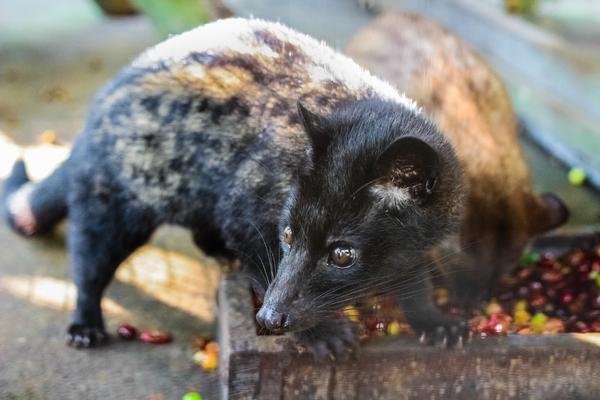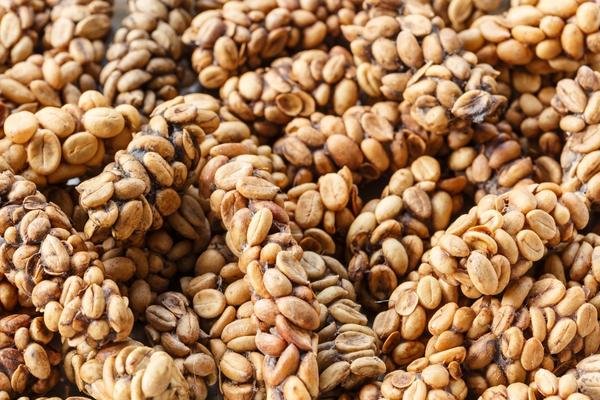Do You Know? Fun Facts About Asian Palm Civet for You!

The Asian palm civet has become so popular because of Luwak coffee or so-called civet coffee crowned as the most expensive coffee in the world. Some people also call this cute animal a toddy cat and musang, a small mammal of the Viverridae family. The Asian palm civets are actually native animals of South and Southeast Asia, especially from Indonesian islands such as Sumatra, Java, Bawean, Kalimantan, and Siberut.
Palm civets are also native to other Asian countries like Malaysia, Singapore, Thailand, India, Bhutan, Vietnam, and so on. According to the International Union for Conservation of Nature (IUCN) Red List, this animal has been listed as the Least Concern since 2018. That’s because its numbers today are still increasing.
So, to get more insight into facts about Asian palm civet, finish our complete review below.
Table of Contents
Characteristics of Asian Palm Civets

This small mammal has an average body length of up to 43-71 cm. The tail length of this civet is between 40 cm to 66 cm. Meanwhile, their weight can vary from 2 to 5 kg. The Asian palm civet is also known for its characteristic of a pointed snout and long furry tail. Their body is covered with shaggy hair and grayish in color.
As an omnivore, the Asian Palm Civet has a broad diet ranging from fruits to insects. Besides liking coffee cherries, the Asian palm civet also has a great fondness for palm flower sap. In terms of behavior, this cute mammal likes climbing trees and living in forests. Moreover, they are known as nocturnal animals who like to roam around at night or dusk.
Distribution and Habitat of Asian Palm Civets

The Asian palm civet is a small mammal that loves to live in the tropical forests of South and Southeast Asia. As previously mentioned, this type of civet is native to several Asian countries such as Indonesia, Vietnam, Thailand, etc. Furthermore, these animals also like to inhabit primary and secondary forests, mangroves, seasonally flooded peat swamp forests, teak plantations, or oil palms. Moreover, Asian palm civets are often found in parks or suburban gardens with undisturbed vegetation or surrounded by mature fruit trees.
Fun Facts About Asian Palm Civet

Aside from their cute appearance, here are some fun facts about Asian palm civets you need to know.
Is the Asian Palm Civet a Cute Animal?
Undoubtedly, these small mammals are cute in their own way. They have unique motifs, like wearing a white mask on their forehead. They also have white spots on either side of their nostrils. There is a dark line between the civet’s eyes which makes it look cuter. Along with their shiny eyes, their furry body and small ears make their appearance even more charming.
How Do Asian Palm Civets Communicate?
The Asian palm civet is usually a silent animal, but it can also produce sounds similar to meows. Also, when threatened, they will do something like snarling, hissing, and spitting. Other than that, these animals like to use their scent glands to communicate with their species instead of using their vocalizations. That’s why these cute animals usually release their anal glands on the ground to mark their territories. However, the Asian palm civet has various modes of communication at their disposal, such as visual, auditory, or the ability to sense smell.
What Do Asian Palm Civets Eat?
The Asian palm civet has an extensive range of diets. They like to eat fruits, such as mangoes, coffee cherries, berries, and bananas. The palm flower also became their favorite diet. Along with insects, a civet cat eats small animals like snakes, rodents, lizards, and frogs.
Also Read: LUWAK Coffee Health Benefit and The History
Other Facts About Asian Palm Civet
Apart from the interesting facts above luwak, here are other fun details about Asian palm civets.
- As a solitary animal, the Asian palm civet likes to spend its time alone. These animals will only congregate with one another during mating season. After the mating process is complete, they will go their own ways. They are also the type of animals that like to hunt alone and do not like to share their food with others.
- This cute mammal has a long lifespan, between 15 to 20 years. Some reports also mention that a civet cat can live up to 22 years.
- After the mating process, the female civet will undergo a gestation period of 2 months. They usually give birth to 2-5 pups in a litter.
- When trying to make contact with their species, civets sometimes make ‘ha ha ha’ sounds—much like those made by hyenas.
Asian Palm Civet and Luwak Coffee

The Asian palm civet and coffee are two things that are inseparable today. Luwak coffee, widely known as civet coffee, is a coffee produced from coffee cherries eaten and digested by Asian palm civets. These half-digested beans undergo a process of fermentation when they pass through the civet’s digestive organs. However, this coffee is popular because the caffeine content in both Robusta and Arabica Luwak coffee tends to be lower than in unfermented ones.
Also Read: From Trees to Your Cup: 3 Types of Coffee Processing Methods
But unfortunately, due to civet coffee becoming a trendy drink, Asian palm civets are being increasingly hunted from the wild to boost coffee production.











